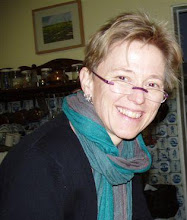 Remember the book, “Everyone Poops,” from potty training days? Well, here is the European version: Everyone Pees. In all kinds of places. My favorite new-and-different European bathroom element is the happily ubiquitous dual flush toilet, commonly found in restaurants and hotels (including ours). There is one button to press if you want to flush after #1, and another button to flush after #2, which flushes more water, for that heavier load. When is the U.S. going to catch up with Europeans and make these simple water-saving devices a part of the common lexicon?
Remember the book, “Everyone Poops,” from potty training days? Well, here is the European version: Everyone Pees. In all kinds of places. My favorite new-and-different European bathroom element is the happily ubiquitous dual flush toilet, commonly found in restaurants and hotels (including ours). There is one button to press if you want to flush after #1, and another button to flush after #2, which flushes more water, for that heavier load. When is the U.S. going to catch up with Europeans and make these simple water-saving devices a part of the common lexicon?I also liked the highway bathroom stop we made in Switzerland. This ESSO gas station was situated in the bottom of a bowl of mountains somewhere south of Altdorf, with views worthy of a highway overlook. In the bathrooms, there was a gizmo to clean the toilet seat before you used it, plenty of toilet paper, soap and those hand driers that involve inserting your hands in a sort of envelope, where hot air blows on them and you slowly extract them to see that, voila! They are dry!
We did have to pay one euro for the privilege of using this uber-clean toilette, but the view outside was free: plus, just off the parking lot was a small pathway to a fast-running river, with a straight-up wall of mountain across the water. Photo-worthy.
Less appealing was the beside-the-highway stop, I think we were still in Germany at that point. This was a scenic overlook-type pull-over, but without the scene, just a bit of woods and a big group of white-haired tourists in the parking lot holding small wine bottles and posing for a photo. There was no bathroom—just a path in the woods with telltale squares of toilet paper here and there along the edges. So much for the legendary German sense of propriety and perfection. I picked my way down the path, hoping that German poison ivy would look the same as American poison ivy, so I’d recognize it before choosing the wrong spot for my toilette, so to speak. And I took care to bury my own toilet paper under a bit of moss.
More interesting – though I’m not sure it was much better – were the toilets in Bellinzona. Typical of Italian toilets (according to my more well-traveled bathroom buddy, Nikita), these involved two foot pads with treadmarks (what, in case you start to slide into the toilet below?) on either side of a hole in the ground. Well, it’s a porcelained hole in the ground, but still, it is on the floor, and you are straddling it and squatting. Okay. So I gamely hang my bag on the hook on the back of the door and squat. But somehow, in the middle of this process, my eyeglasses fall from where I’d hooked them on my shirt, and fall right into the hole.
I now know that hand sanitizer is actually a very good thing to carry along. And that it works on eyeglasses, just fine.
Perhaps the best way to avoid a dirty bathroom is the sign we saw in a Locarno, Switzerland cafe, on the men's room only -- shown at the top of this post. How not to pee.






